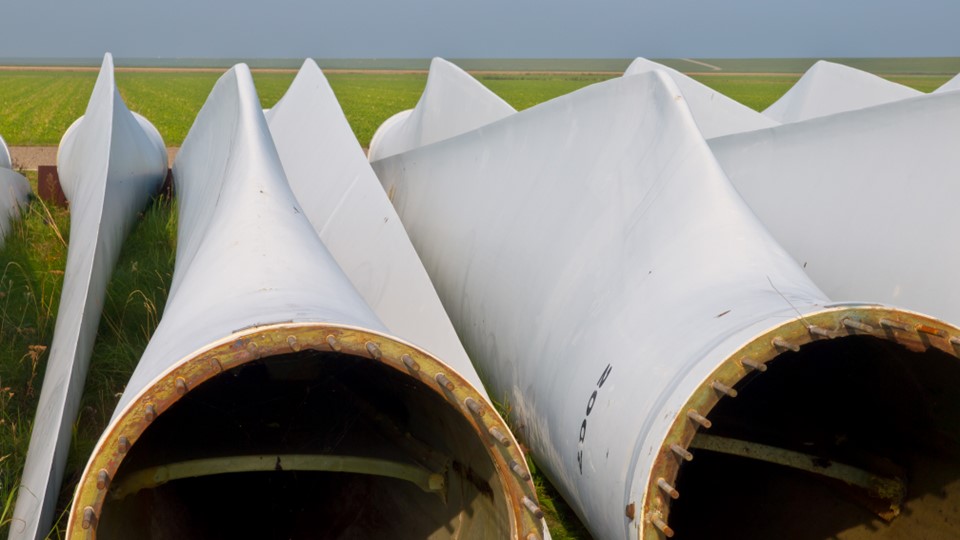United Kingdom – New figures from National Grid show that wind power has become the second largest source of electricity in the UK, supplying 26.8% in 2022 – the first time that wind has supplied over a quarter of the country’s electricity.
This remarkable achievement has been driven by the installation of more than 11,000 wind turbines across the UK with a total installed capacity of 28 gigawatts.
However, the rapid growth and scale of wind power generation has started to present some environmental challenges. Many of the first-generation wind turbines are coming to the end of their operational life and need to be replaced with more modern and efficient turbines. It is estimated that around 14,000 wind turbine blades will be decommissioned across Europe by 2023, and around 85 to 90% of a wind turbine’s total mass can be recycled.
Although most components such as the foundation, tower, and components in the nacelle can be recycled, recycling wind turbine blades is a more significant challenge due to the composite materials used in their production. Despite various technologies that exist to recycle blades, these solutions are yet to be widely available and cost-competitive.
New solution
To address this issue, Enva, a leading recycling company, has developed a new solution that enables the recovery of recyclable materials such as steel from decommissioned wind turbine blades. Following a successful trial at its facility in Ayrshire, Enva is now rolling out this solution to wind power producers across the UK.
The process involves crushing and shredding decommissioned turbine blades, and the residual material is then used as a replacement for traditional fossil fuels in EfW (energy from waste) facilities. To aid processing and transportation, specialist equipment is used to cut down the blades into three 50 metre lengths prior to being delivered to Enva’s recycling facility.
Recycling process
According to Michelle Scott, Operations Director, Enva, “Enva is committed to bringing at least one new recycling process to market every year, and the opening of our wind turbine blade recycling facility is another tangible example of this innovation and investment. The increased use of alternative energy sources will result in new waste streams, which will each require managing in a way that enables us to unlock their circular economy and commercial value. We look forward to continuing to work with the Wind Sector and other energy companies to help them realize these benefits.”
The UK and Europe are expected to decommission 25,000 tonnes of wind turbine blades a year by 2025, with this figure rising to 52,000 by 2030. The Enva solution has the potential to address this significant challenge and help the wind energy industry to become more sustainable.





